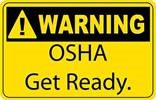
A Message from Nan Gallagher, JD, Esq.
January 22, 2021
Since April 15, 2020, there have been at least 15,778 verified national OSHA interventions (letter and/or telephone) of medical practices stemming from complaints of employees concerning infection control, sterilization, and public health risks in the offices in the midst of the COVID-19 pandemic. OSHA is the Occupational Safety & Health Administration, a federal agency that has always loomed in the backdrop for any medical practice ready to pounce in the highly regulated field of healthcare. It was created to protect employees. As a certified OSHA Administrator, it is my professional and personal sentiment that many employees who are either reluctant to remain at work due to (a) increased exposure risks or (b) because they can make more money out on unemployment, are becoming “trigger happy” with firing off complaints to OSHA or the Department of Labor against employers if they perceive that they are at risk in the workplace.
On or about May 18th, even the New Jersey Division of Consumer Affairs (“DCA”), which houses the State Board of Medical Examiners, has spoken on the issue of safety in the workplace for medical practices starting to reopen their doors. By Administrative Order and Rule Adoption, the DCA has mandated that medical practices follow very specific safety protocols to ensure the safety, health, and well-being of physicians, staff, and patients. From limitations on person-to-person contact, to PPE, to cleaning and disinfection, to establishing “rigorous protections for staff”, the DCA and, derivatively, the Department of Labor and the Board of Medical Examiners prowl for non-compliance as a predicate for discipline or citations to a medical practice. While OSHA oversight was always a remote risk to a physician, licensing board and labor agency oversight were very real ones, and now there are very good reasons for them to do a deeper dive into your workplace safety protocols. Executive Order 192 that was implemented on November 5, 2020 takes regulatory oversight one step further by mandating strict safety and infection control parameters for all employers. Continuing to remain in non-compliance is risky road to remain on.
Employers should remain alert of changing outbreak conditions, including as they relate to community spread of the COVID-19 virus and testing availability, and implement infection prevention measures accordingly. In fact, on this point, some private financial lenders are mandating that a borrower must implement (and, in some instances, provide) infection control and COVID-based protocols as a condition precedent to qualify for additional private loans. As states or regions satisfy the gating criteria to progress through the phases of the guidelines for remaining open, employers will likely be able to adapt this guidance to better suit evolving risk levels and necessary control measures in their workplaces.
Employers should assess the hazards to which their workers may be exposed; evaluate the risk of exposure; and select, implement, and ensure workers use controls to prevent exposure. Healthcare workers must use proper PPE when exposed to a patient with suspected or confirmed COVID-19 or other sources of SARS-CoV-2. OSHA recommends that healthcare workers with exposure to suspected or confirmed COVID-19 patients wear:
• Gloves
• Gowns
• Eye/face protection (e.g., goggles, face shield)
• NIOSH-certified, disposable N95 filter facepiece respirators or better
Use respiratory protection as part of a comprehensive respiratory protection program that meets the requirements of OSHA’s Respiratory Protection standard and includes medical exams, fit testing, and training. When removing potentially contaminated PPE such as an N95 respirator, do not touch the outside of the respirator without wearing gloves. In addition to the PPE considerations for all workers and employers of workers at increased risk of occupational exposure, the CDC has developed detailed strategies for optimizing the supply of PPE for gowns, eye protection, face masks and N95 respirators.
The CDC has developed interim guidance for healthcare providers who are coordinating the home care and isolation or quarantine of people confirmed or suspected to have COVID-19.
Routine cleaning and disinfection procedures (e.g., using cleaners and water to pre-clean surfaces before applying an EPA-registered, hospital-grade disinfectant to frequently touched surfaces or objects for appropriate contact times as indicated on the product’s label) are appropriate for COVID-19 and SARS-CoV-2 in healthcare settings, including those patient-care areas in which aerosol-generating procedures are performed.
Every medical practice is strongly encouraged to ensure strict compliance with OSHA and Executive Order 192 are achieved to protect staff and to ameliorate the daunting threat of OSHA agency intervention. If you would like to obtain a redacted copy of the type of letter that OSHA or the Department of Labor issues when complaints come in, please contact the firm.
I continue to discount our OSHA Package during the pandemic. It includes a comprehensive OSHA Manual, incident reporting forms, an OSHA notice to post in your practice, annual staff training, and air-tight policies that I have personally prepared on COVID-19, infection control, sterilization, injectables, and expired medications. These policies were prepared in synergy with the latest recommendations coming out of the CDC, the AMA, the NJDOH, and the DCA. We also offer annual staff training as well as guidance on compliance with Executive Order 192. (A reminder to our Scepter members that you are also afforded immediate intervention in these types of OSHA or DOL interventions as part of your Plan.)
For more information, or to order your OSHA Package for your medical practice, contact the firm at Info@DocAdvocates.com or call (973) 998-8494.